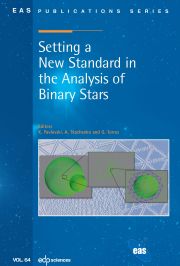No CrossRef data available.
Article contents
The ISM in Distant Galaxies
Published online by Cambridge University Press: 17 September 2012
Abstract
The interstellar medium (ISM) is a key ingredient in galaxy formation and evolution as it provides the molecular gas reservoir which fuels star formation and supermassive black hole accretion. Yet the ISM is one of the least studied aspects of distant galaxies. Molecular and atomic transitions at (sub)millimetre wavelengths hold great promise in measuring macroscopic properties (e.g. masses, morphologies, star formation laws), as well as microscopic properties (e.g. gas densities, temperatures, cooling) of high-z galaxies. In this overview I summarize the growing number of high-z molecular line detections, highlighting some of the most intriguing results along the way. I end by discussing a few areas where future facilities (e.g. ALMA, EVLA, CCAT, LMT) will drastically improve on the current state of affairs.
- Type
- Research Article
- Information
- Copyright
- © EAS, EDP Sciences, 2012


